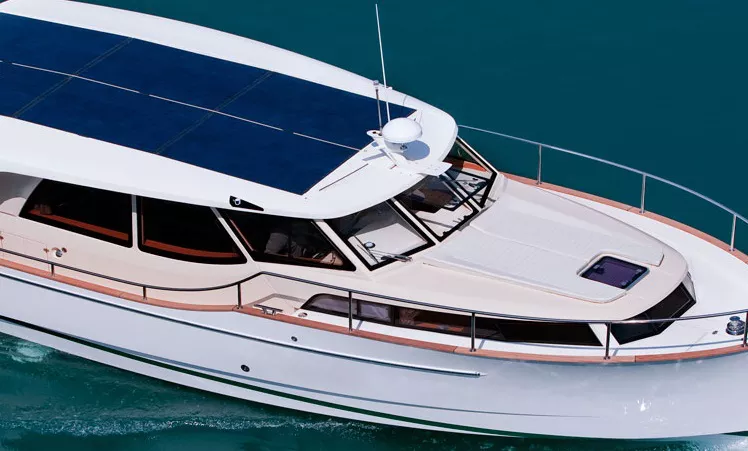Crossing the Atlantic Ocean by motor yacht is a remarkable journey that combines adventure, luxury, and the thrill of open-water navigation. The duration of such a voyage varies widely, influenced by factors like the yacht’s design, cruising speed, route selection, and prevailing weather conditions. Understanding these variables is essential for planning a successful and safe Atlantic crossing.
Factors Influencing Crossing Duration
1. Yacht Specifications
- Size and Design: Larger yachts, especially those designed for long-distance travel, tend to have higher cruising speeds and greater fuel capacities, enabling faster and more efficient crossings.
- Engine Power: The horsepower and efficiency of a yacht’s engines directly impact its speed and fuel consumption, affecting the overall time required for the journey.
- Fuel Capacity and Efficiency: Yachts with larger fuel tanks and efficient fuel consumption rates can undertake longer legs without the need for frequent refueling stops, potentially reducing total travel time.
2. Cruising Speed
Motor yachts typically cruise at speeds ranging from 10 to 25 knots. However, speeds above 20 knots are less common due to increased fuel consumption and potential comfort issues. The chosen cruising speed significantly influences the crossing duration; for instance, traveling at 15 knots will naturally shorten the journey compared to 10 knots.
3. Route Selection
- East to West (Europe to the Americas): A common route starts from ports like Gibraltar or the Canary Islands, heading toward destinations in the Caribbean or the U.S. East Coast. Distances range from approximately 2,700 to 3,500 nautical miles, with typical crossing times between 2 to 4 weeks, depending on yacht specifications and weather conditions.
- West to East (The Americas to Europe): Routes often begin from the U.S. East Coast or the Caribbean, proceeding to Europe via the Azores or Portugal. These crossings generally take 2 to 3 weeks, influenced by similar factors.
4. Weather Conditions
Weather plays a crucial role in determining crossing times. Favorable conditions can expedite the journey, while adverse weather, including storms and headwinds, can cause delays. Planning the voyage during seasons known for stable weather patterns can help mitigate such risks.
5. Stops and Delays
While some yachts attempt non-stop crossings, many incorporate stops for refueling, resupplying, or waiting out poor weather. Common stopover points include the Azores, Canary Islands, and Bermuda. Each stop adds time to the overall journey but can enhance safety and comfort.
Notable Atlantic Crossings by Motor Yachts
To provide concrete examples, here are some documented Atlantic crossings:
Mangusta 54m Motor Yacht “El Leon”
- Route: Gibraltar to Barbados via the Canary Islands and Cape Verde.
- Distance: Approximately 4,800 nautical miles.
- Duration: Completed the journey in six days.
- Details: “El Leon” departed from Gibraltar on December 1, stopped in Las Palmas (Canary Islands) and Cape Verde for refueling, and arrived in Bridgetown, Barbados, on December 17. The yacht’s design features, including a four-engine setup and electric stabilizers, contributed to its impressive speed and efficiency.
Moonen 84 Motor Yacht “Etoile d’Azur”
- Route: Gibraltar to Sint Maarten via the Azores.
- Distance: Approximately 3,350 nautical miles.
- Duration: The crossing from Gibraltar to the Azores took about four and a half days, and from the Azores to Sint Maarten, approximately ten and a half days.
- Details: “Etoile d’Azur” encountered heavy weather on the first leg but performed admirably. The yacht’s fuel consumption was efficient, averaging 6.4 liters per nautical mile on the second leg.
Planning Your Atlantic Crossing
When planning an Atlantic crossing by motor yacht, consider the following steps:
- Consult with Experts: Engage with yacht designers, experienced captains, and maritime planners to assess your yacht’s capabilities and plan the optimal route.
- Prepare for Contingencies: Develop plans for potential delays, including alternative stopovers and strategies for dealing with adverse weather.
- Equip Your Yacht Appropriately: Ensure your yacht is equipped with necessary safety gear, communication systems, and supplies to handle the demands of a transatlantic voyage.
Conclusion
The time required to cross the Atlantic by motor yacht varies based on multiple factors, including yacht specifications, cruising speed, route, weather conditions, and stops. While some crossings can be completed in as little as six days, others may take several weeks. Meticulous planning, understanding your yacht’s capabilities, and preparing for various contingencies are essential to ensure a successful and enjoyable Atlantic crossing.

